Additives
Supporting layer and breeder performance via trace mineral nutrition
STORE IN THE BOOKSTORE PDFRead more content on nutriNews International September 2024
Additives
Read more content on nutriNews International September 2024
Supporting layer and breeder performance via trace mineral nutrition
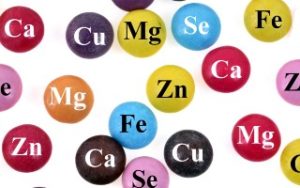 Trace minerals are essential components of layer and breeder diets, and their functions in the organism cannot be compensated by other dietary components. Today it is known that the elements zinc (Zn), manganese (Mn), copper (Cu) and iron (Fe) are relevant for several production parameters and animal well-being: They are part of a variety of enzymes involved in the immune system, wound healing, egg production, reproduction, as well as integrity of the skin and skeletal system. Moreover, they have a key role in the antioxidative system keeping the animal healthy – especially under stressful conditions, like heat stress.
Trace minerals are essential components of layer and breeder diets, and their functions in the organism cannot be compensated by other dietary components. Today it is known that the elements zinc (Zn), manganese (Mn), copper (Cu) and iron (Fe) are relevant for several production parameters and animal well-being: They are part of a variety of enzymes involved in the immune system, wound healing, egg production, reproduction, as well as integrity of the skin and skeletal system. Moreover, they have a key role in the antioxidative system keeping the animal healthy – especially under stressful conditions, like heat stress.
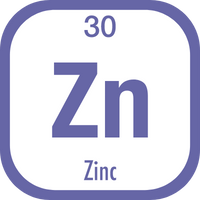 Zn is important for the synthesis of the structural proteins collagen and keratin in bones, cartilage, foot pads, skin, beak and feathers. But also, Mn and Cu play an important role in the formation and integrity of these body tissues. Regarding eggshell formation, Zn is a cofactor for the fixation of calcium carbonate and Mn is important for the mechanical properties and ultrastructure. Moreover, Cu catalyzes the crosslinking of elastin and collagen during the egg building process, and a deficiency can lead to eggshell deformities. Fe is a constituent of hemoglobin and myoglobin. It is essential for proper oxygen transport and storage, protein metabolism and energy supply, most relevant for the chick’s development.
Zn is important for the synthesis of the structural proteins collagen and keratin in bones, cartilage, foot pads, skin, beak and feathers. But also, Mn and Cu play an important role in the formation and integrity of these body tissues. Regarding eggshell formation, Zn is a cofactor for the fixation of calcium carbonate and Mn is important for the mechanical properties and ultrastructure. Moreover, Cu catalyzes the crosslinking of elastin and collagen during the egg building process, and a deficiency can lead to eggshell deformities. Fe is a constituent of hemoglobin and myoglobin. It is essential for proper oxygen transport and storage, protein metabolism and energy supply, most relevant for the chick’s development.
![]() As certain inorganic trace mineral sources cannot always fulfil the animal ́s demand, alternatively chelated forms are increasingly used. Chelates are typically characterized by a binding of the metal to single amino acids, like glycine, or to hydrolyzed protein. A lower susceptibility to dietary antagonisms allows a higher bioavailability of chelated trace minerals and hence a more stable supply of the animal, with the potential to reduce excretion levels of metals.
As certain inorganic trace mineral sources cannot always fulfil the animal ́s demand, alternatively chelated forms are increasingly used. Chelates are typically characterized by a binding of the metal to single amino acids, like glycine, or to hydrolyzed protein. A lower susceptibility to dietary antagonisms allows a higher bioavailability of chelated trace minerals and hence a more stable supply of the animal, with the potential to reduce excretion levels of metals.
Promoting egg production and eggshell stability
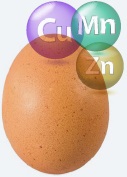 Using chelates in combination with inorganic trace mineral sources or in partial/full replacement has been shown to be beneficial for egg production and eggshell quality, which are essential for the economic success of a layer farm – especially with increasing age of the hen. A good eggshell stability is equally important in chicken breeding as it is crucial for a good embryo development, especially during the last phase of incubation.
Using chelates in combination with inorganic trace mineral sources or in partial/full replacement has been shown to be beneficial for egg production and eggshell quality, which are essential for the economic success of a layer farm – especially with increasing age of the hen. A good eggshell stability is equally important in chicken breeding as it is crucial for a good embryo development, especially during the last phase of incubation.
![]() In two recent field trials a premix of glycine chelates (Zn, Mn, Cu from E.C.O.Trace®, Biochem Zusatzstoffe Handels- und Produktionsgesellschaft mbH) was fed in combination with an inorganic source in a commercial layer diet. A comparison of egg production per housed hen after 55 weeks as well as around peak production (weeks 25-27) showed a higher egg production after adding glycine chelates to the diet (Figure 1).
In two recent field trials a premix of glycine chelates (Zn, Mn, Cu from E.C.O.Trace®, Biochem Zusatzstoffe Handels- und Produktionsgesellschaft mbH) was fed in combination with an inorganic source in a commercial layer diet. A comparison of egg production per housed hen after 55 weeks as well as around peak production (weeks 25-27) showed a higher egg production after adding glycine chelates to the diet (Figure 1).
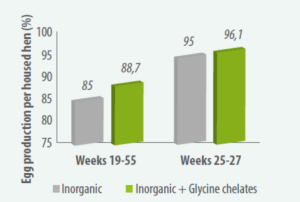
Figure 1: Effect of adding glycine chelates (E.C.O.Trace®) to the diet on egg production compared to the previous production cycle with only inorganic trace minerals in the diet (field trial, n ~ 53,000 per group) (Biochem, 2019).
![]() Feeding glycine chelates to older laying hens (74 ± 2 weeks) slightly improved eggshell quality already after 2 weeks, demonstrated by a higher eggshell strength and eggshell thickness (Figure 2). This rapidly visible effect can be explained by the high demand of older laying hens for highly available trace minerals.
Feeding glycine chelates to older laying hens (74 ± 2 weeks) slightly improved eggshell quality already after 2 weeks, demonstrated by a higher eggshell strength and eggshell thickness (Figure 2). This rapidly visible effect can be explained by the high demand of older laying hens for highly available trace minerals.
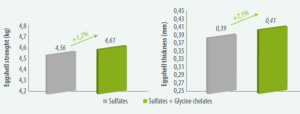
Figure 2: Improved eggshell strength [kg force] (left) and eggshell thickness (right) of eggs from laying hens fed a diet added with glycine chelates (E.C.O.Trace®) after 2 weeks (field trial, n = 50,000 per group) (Biochem, 2021a).
Overall health status and longevity
Chelates have been shown to support the overall health status of layers and breeders, e.g., birds can profit from higher blood serum concentrations of immune cells (like leukocytes) and an improvement of the antioxidative status.
![]() Another important parameter of animal welfare is footpad health, which is known to be better when using glycine chelates in combination with inorganic trace minerals (Figure 3). In addition, it is well known, that birds fed chelates demonstrate a higher bone mineralization and an overall improved appearance, for example by a better feathering.
Another important parameter of animal welfare is footpad health, which is known to be better when using glycine chelates in combination with inorganic trace minerals (Figure 3). In addition, it is well known, that birds fed chelates demonstrate a higher bone mineralization and an overall improved appearance, for example by a better feathering.
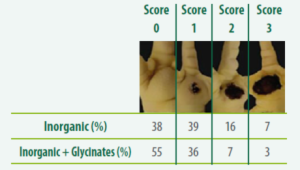
Figure 3: Scoring results of foot pad dermatitis in broilers after 6 weeks of fattening period (n=100) with only inorganic trace minerals or a combination of inorganic trace minerals with glycine chelates (E.C.O.Trace®) in a field trial (Biochem, 2021b).
![]() Finally, various studies showed that chelates have positive effects on longevity and can reduce bird ́s mortality in the flock. During the above-described field trial (Biochem, 2019) mortality was reduced from 3.7 % (inorganic) to 2.4 % (inorganic + E.C.O.Trace®) during weeks 19-55. In addition, laying hens fed glycine chelates could be kept in the house 8 weeks longer than usual.
Finally, various studies showed that chelates have positive effects on longevity and can reduce bird ́s mortality in the flock. During the above-described field trial (Biochem, 2019) mortality was reduced from 3.7 % (inorganic) to 2.4 % (inorganic + E.C.O.Trace®) during weeks 19-55. In addition, laying hens fed glycine chelates could be kept in the house 8 weeks longer than usual.
Fertility, hatchability and chick quality
Numerous studies proved advantages of feeding chelated Zn, Mn, Cu and Fe on fertility of breeding hens and breeder roosters reflected by an increased number of fertile eggs. Hatchability of fertile eggs is of high economic relevance and has been proven as well to be positively affected by the implementation of chelated trace minerals in hen diets.
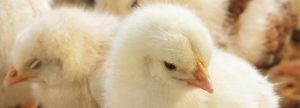
Moreover, supporting a high trace mineral supply to the egg yolk via nutrition of the hen, improves humoral immune response, protection from oxidative damage as well as gastrointestinal development of chicks. In addition, it has been shown that feeding chelates affects embryo live weight, mortality, and bone mineralization and therefore bone stability positively.
Conclusions
Trace mineral supply is a crucial factor in layer and breeder feeding. An optimal supply of modern genetics can especially be ensured by using organic sources, like glycine chelates, without increasing excretion levels. Adding chelates to diets has positive effects on egg production and shell stability, longevity as well as mortality, fertility, hatchability and chick quality. Consequently, trace mineral chelates can be seen as a useful tool to improve economy as well as ecology of egg and chick production.
References are available upon request.
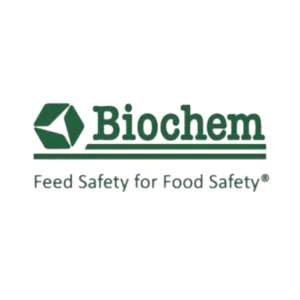
MORE CONTENTS Biochem International